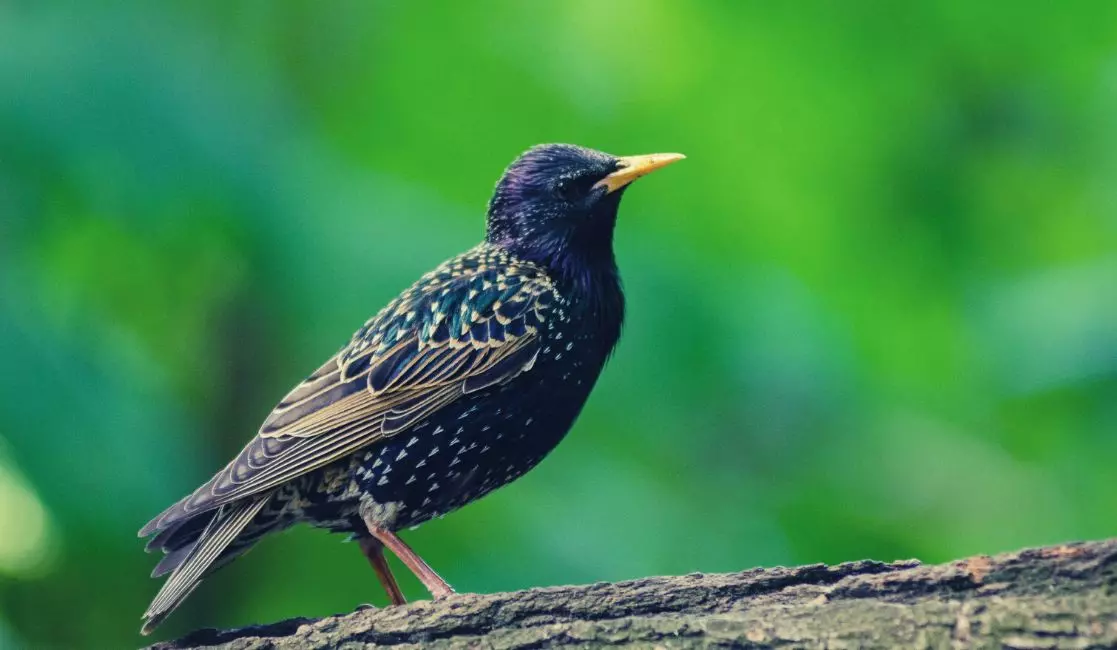Humane Starling Control & Removal Services in Bowmanville
How the Starling bird destroys homes
Nesting: Starlings are cavity nesters, which means they often seek out cavities or openings in buildings to build their nests. This can include openings in eaves, vents, or small gaps in roofs. While they don't intentionally destroy homes, their nesting activities can result in the accumulation of nesting materials, such as twigs, leaves, feathers, and droppings. This buildup may require cleanup or cause blockages in ventilation systems.
Noise: Starlings are highly vocal birds and can be quite noisy, especially when they gather in large flocks. Their vocalizations, which include a variety of calls, chirps, and whistles, may become a nuisance for some homeowners, particularly if the birds congregate near residences.
Droppings: Like many birds, starlings produce droppings, which can accumulate on structures, walkways, and vehicles. If a large number of starlings are present in an area, their droppings can become unsightly and potentially cause minor damage to the surfaces they land on over time.

How the Starling bird block vents
Nesting material: Starlings construct their nests using twigs, leaves, grass, feathers, and other debris. If they find an open vent that provides access to an enclosed space, they may gather nesting materials and create a nest inside the vent. As they build their nests, the accumulation of materials can gradually obstruct or partially block the vent opening.
Nest size: Starlings are known to build relatively large nests compared to their body size. These nests can grow over time as they add more materials and expand the structure. If a starling nest is situated near a vent opening, it could grow large enough to partially or completely block the vent, impeding proper airflow.
Nest location: Starlings may build their nests directly inside vents, particularly if the vent provides a suitable cavity-like space for nesting. This can directly obstruct the vent's airflow, potentially causing issues with ventilation or exhaust systems.
How the Starling bird introduces bird mites
Nest infestation: Bird mites may infest starling nests if they are already present in the environment or if other infested birds have previously occupied the nest. These mites feed on the blood of birds and their nestlings.
Mite reproduction: Bird mites can reproduce rapidly, with a single female laying hundreds of eggs. As the mite population grows, it can expand beyond the nest and infest nearby areas, such as walls, ceilings, or other parts of a building.
Migration: When starling chicks fledge and leave the nest, mites that have infested the nest may migrate to find new hosts. This can lead to mites spreading to other areas of the building or even infesting nearby human dwellings.
How the Starling bird spread diseases
Fecal contamination: Starling droppings can carry various bacteria, viruses, and parasites that can cause diseases. When starling droppings contaminate surfaces such as sidewalks, park benches, or outdoor dining areas, there is a risk of disease transmission if individuals come into contact with the contaminated areas and fail to practice proper hygiene.
Airborne transmission: Certain diseases, such as histoplasmosis, can be caused by the inhalation of fungal spores found in bird droppings, including starling droppings. These spores can become airborne when droppings dry and are disturbed, potentially leading to respiratory infections if inhaled.
Nesting materials and parasites: Starlings may carry external parasites like bird mites or ticks in their feathers or nests. These parasites can transmit diseases to humans or other animals if they come into contact with them.






